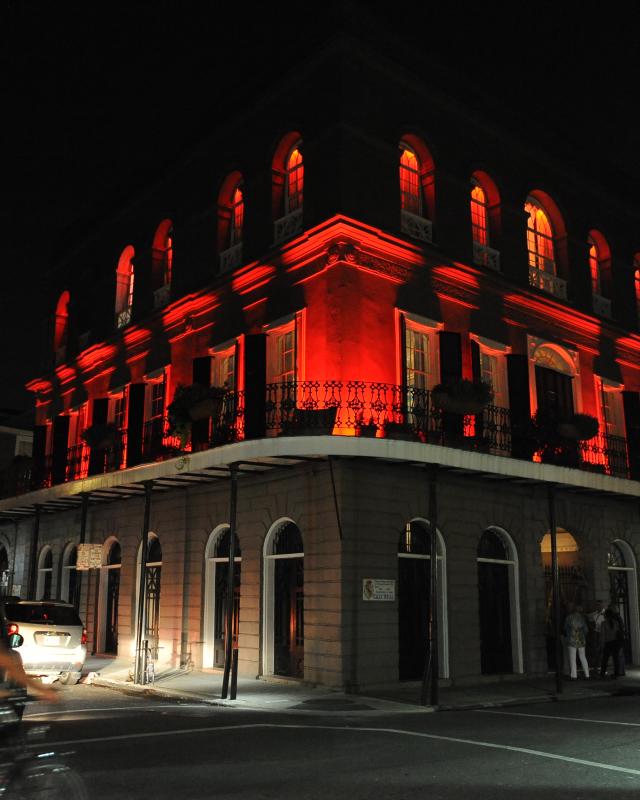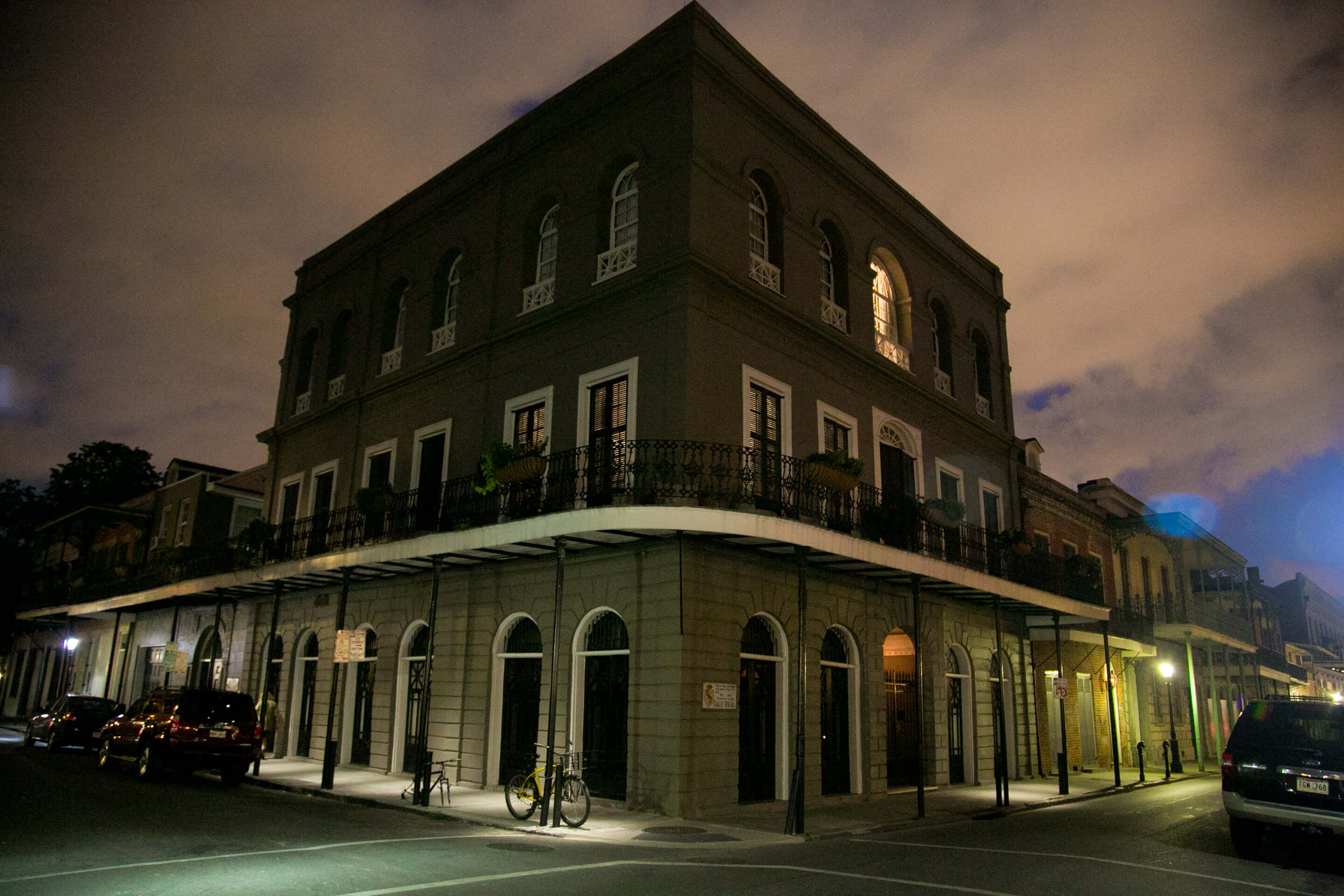
Where the Veil Thins: Exploring the Spectral Heart of New Orleans
NEW ORLEANS, LA – The air in New Orleans is thick, not just with the humid embrace of the Mississippi Delta, but with something else – a palpable sense of history, of lives lived and tragically lost, of secrets whispered and tales untold. Beneath the gas lamps of the French Quarter, in the shadows of crumbling Creole townhouses and the silent reverence of its famous above-ground cemeteries, New Orleans doesn’t merely tell ghost stories; it is a ghost story, an open-air museum of the spectral, where the veil between worlds feels perpetually thin.
For centuries, this unique city, born from a volatile mix of French, Spanish, African, and Creole cultures, has been a crucible of life and death. Yellow fever epidemics, devastating fires, brutal slave rebellions, bloody duels, and a vibrant, often misunderstood, spiritual tradition of Voodoo have all contributed to a profound psychic residue that permeates its very foundations. It’s a city where every brick seems to hum with a past presence, and the line between historical fact and supernatural lore blurs into an intoxicating, chilling blend.

"New Orleans isn’t just America’s most haunted city; it’s a city that lives with its dead," says Madeleine Dubois, a local historian and popular ghost tour guide, her voice a low murmur against the backdrop of distant jazz. "Our history is soaked in tragedy and passion. When you have that kind of intensity, those emotions don’t just vanish. They linger, sometimes for centuries."
The Macabre Majesty of the LaLaurie Mansion
No exploration of New Orleans’ spectral landscape is complete without a pilgrimage to the infamous LaLaurie Mansion on Royal Street. From its elegant facade, one would never guess the unspeakable horrors that unfolded within its walls in the early 19th century. Owned by the prominent socialite Madame Delphine LaLaurie, the mansion became the site of a horrific discovery in 1834 when a fire, allegedly set by an enslaved cook, revealed a torture chamber in the attic. Rescuers found mutilated, starved, and chained enslaved people, victims of Madame LaLaurie’s sadistic cruelty.
The immediate aftermath saw LaLaurie flee the city, escaping the enraged mob. But her victims, and perhaps her own tormented spirit, are said to remain. Eyewitnesses, from former residents to construction workers, report disembodied screams, chains rattling, phantom figures, and the pervasive stench of decay and fear. One chilling account describes a spectral woman appearing on the balcony, her eyes filled with sorrow, only to vanish into thin air. The mansion, now privately owned and notoriously resistant to public viewing, stands as a grim monument to human cruelty and the enduring echo of suffering.
St. Louis Cemetery No. 1: The City of the Dead
A short walk from the French Quarter lies St. Louis Cemetery No. 1, a labyrinthine city of above-ground tombs, necessary due to New Orleans’ waterlogged soil. This necropolis, established in 1789, is home to a staggering number of interred souls, including chess champion Paul Morphy and, most famously, Marie Laveau, the legendary Voodoo Queen.
Laveau, who lived from 1801 to 1881, was a free woman of color who practiced Voodoo and Catholicism, serving as a hairdresser, herbalist, and spiritual advisor. Her tomb, a simple white vault marked by three X’s left by visitors hoping for a wish to be granted, is arguably the most visited grave in America. While Laveau’s spirit is said to be benevolent, offering guidance and protection, the cemetery itself is rife with other spectral activity. Visitors report disembodied voices, phantom touches, and the sensation of being watched by unseen eyes among the decaying mausoleums. The very air within the cemetery feels charged, a silent testament to generations of lives laid to rest.
"It’s not just Laveau," explains a long-time cemetery tour guide, pointing to a crumbling crypt. "Every one of these tombs holds a story. Some of them are just waiting for the right person to hear them again."

Spirits of the Saloons and Supper Clubs
New Orleans’ vibrant nightlife also extends to the spectral realm. Many of its historic bars and restaurants, steeped in centuries of revelry and sorrow, count spectral patrons among their regulars.
Muriel’s Jackson Square, an elegant restaurant housed in a building dating back to the 1700s, is particularly known for its resident ghost, a former owner named Antoine Laussat. Laussat, deeply in debt, tragically committed suicide on the second floor of the building in the early 1800s. His spirit, a friendly and mischievous presence, is said to move objects, whisper names, and even participate in the restaurant’s nightly seances held in a dedicated "seance room" on the second floor. Staff often leave bread and wine out for him, a tradition honoring his lingering presence.
Just a few blocks away, Lafitte’s Blacksmith Shop on Bourbon Street, believed to be the oldest continuously operating bar in the United States, dates back to the late 1700s. Once a front for the illicit operations of pirate Jean Lafitte and his brothers, the low-lit, rustic tavern is a hotspot for spectral sightings. Patrons and staff have reported seeing Lafitte himself, a tall, dark figure, lounging by the fireplace, only to vanish. Others speak of cold spots, disembodied voices, and the feeling of unseen presences brushing past them. The rough-hewn timbers and candlelit gloom provide the perfect ambiance for lingering spirits.
The Voodoo Veil: A Spiritual Undercurrent
The unique spiritual landscape of New Orleans is intrinsically linked to its haunting reputation. Voodoo, brought to Louisiana by enslaved Africans, merged with Catholic traditions, creating a syncretic faith deeply rooted in ancestor veneration and spirit communication. Unlike the sensationalized Hollywood portrayal, Voodoo is a complex religion focused on healing, community, and connecting with the Loa (spirits) and ancestral guides.
This deep respect for the dead and the belief in their continued presence in the world creates an environment where spectral encounters are not just tolerated but, for many, expected and even welcomed. "We don’t fear our ancestors here; we honor them," explains a local Voodoo practitioner, her voice calm and measured. "The spirits are part of the fabric of our lives. Sometimes, they just want to be acknowledged, to continue their dance with us."
This cultural acceptance of the supernatural makes New Orleans fertile ground for the paranormal, fostering an atmosphere where unexplained phenomena are often seen not as aberrations but as part of the natural order of things.
The Business of the Beyond: Ghost Tours and Tourism
New Orleans has, perhaps more than any other city, embraced its haunted reputation as a cornerstone of its tourism industry. Dozens of ghost tours, cemetery tours, and Voodoo tours crisscross the city nightly, drawing thousands of visitors eager to walk in the footsteps of the spectral. These tours, while often theatrical and designed for entertainment, also serve as a vital conduit for preserving the city’s rich, often dark, history.
"We blend history with mystery," says Dubois, the tour guide. "We tell the true stories – the epidemics, the fires, the human tragedies – and then we explore the legends that have grown around them. Whether you believe in ghosts or not, you leave with a deeper understanding of this city’s soul."
The popularity of these tours underscores a universal human fascination with the unknown, with what lies beyond. In a world increasingly driven by science and logic, New Orleans offers a refreshing space where the inexplicable is not only acknowledged but celebrated.
The Enduring Allure
Ultimately, the hauntings of New Orleans are more than just tales of restless spirits; they are narratives woven into the very identity of the city. They speak of resilience in the face of immense suffering, of a culture that honors its past, no matter how painful, and of a people who find beauty and mystery in the darkest corners of human experience.
As the sun sets over the Mississippi River, casting long shadows across the French Quarter, one can almost hear the whispers of centuries past carried on the humid breeze. The clatter of horse-drawn carriages, the distant wail of a saxophone, the scent of jasmine and stale beer – all conspire to create an atmosphere where the spectral feels not just possible, but inevitable.
Whether you encounter a full-bodied apparition, feel an inexplicable cold spot, or simply absorb the heavy, historical energy of the place, New Orleans reminds us that some stories are too powerful to simply fade away. They linger, beckoning us to listen, to remember, and to acknowledge that in this captivating city, the dead might just be as lively as the living. And perhaps, that’s exactly how it should be.


